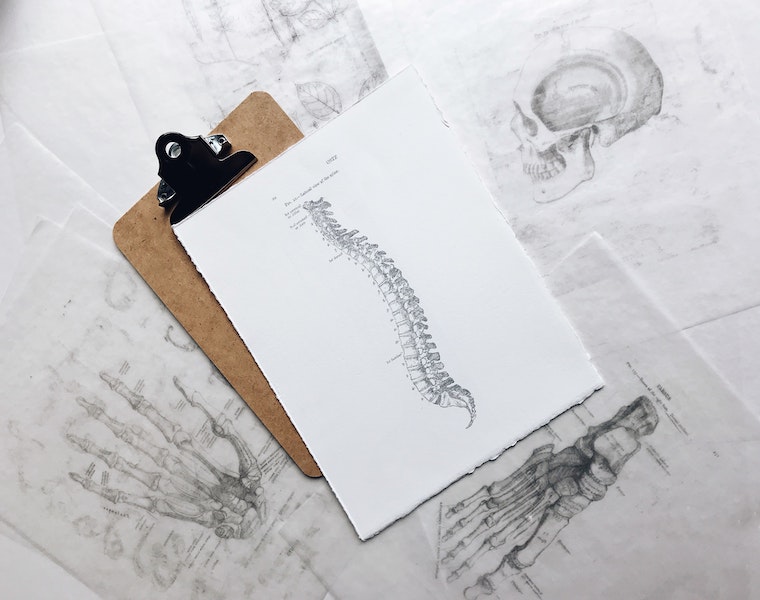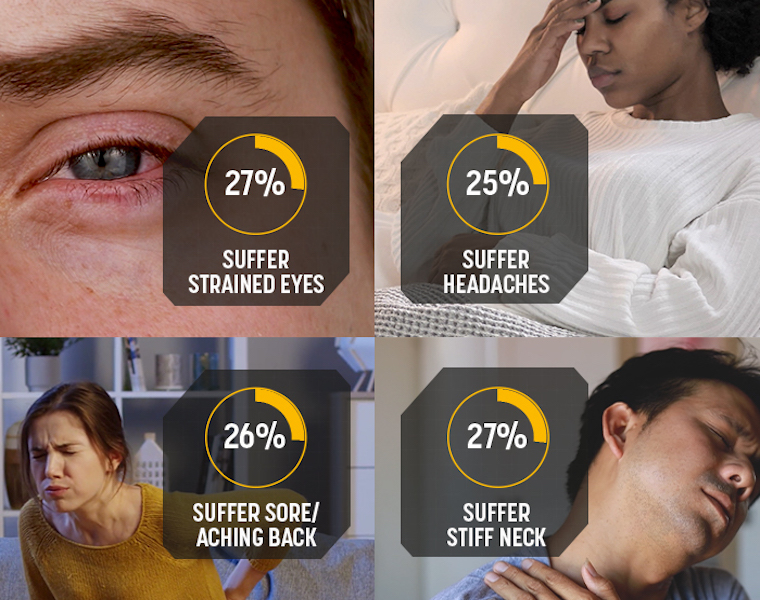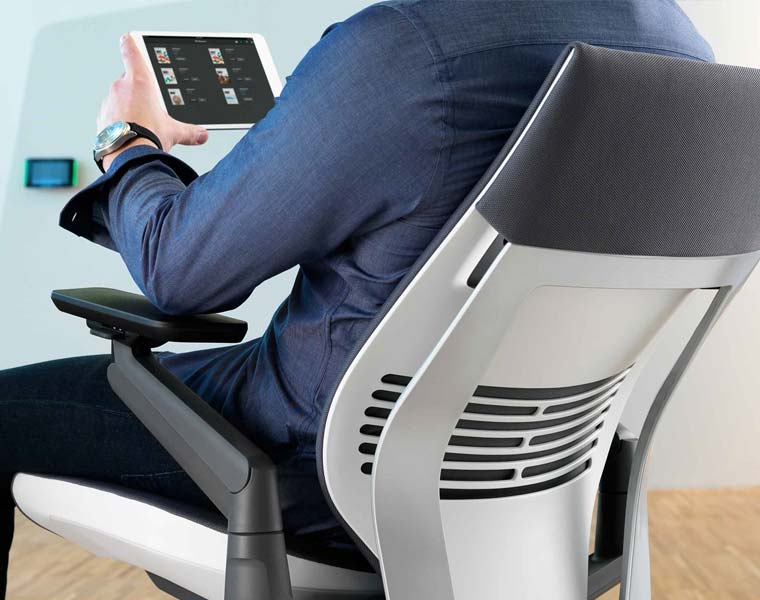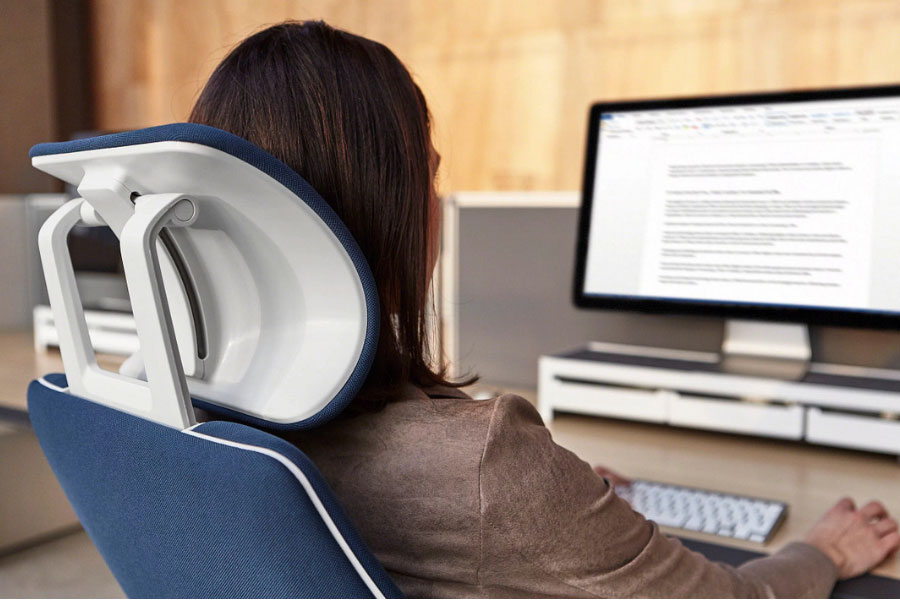Ergonomic office design is a tune we’ve been singing for a long, long time but after the events of the past year or so, it has become more important than ever before. With so many of the world’s workforce having worked from home for extended periods of time as a result of the pandemic social distancing and lockdowns, posture when working has gone out the window.
For the past twelve months (and maybe even more for some), a vast amount of employees have been working from home offices (if they’re lucky), dining room tables, sofas, kitchen counters, and even floors! Yes, that’s right – a recent study published by Fellowes revealed that almost half (49%) don’t have a proper workstation set up at home, with 3% working from the floor. Makes your back ache just thinking about it, doesn’t it?
As people make the return back to the office though – whether that be full-time or through hybrid working – now is the ideal team to hammer home the importance of ergonomic furniture and space design, after months of neglecting our posture and physicality during the working day.
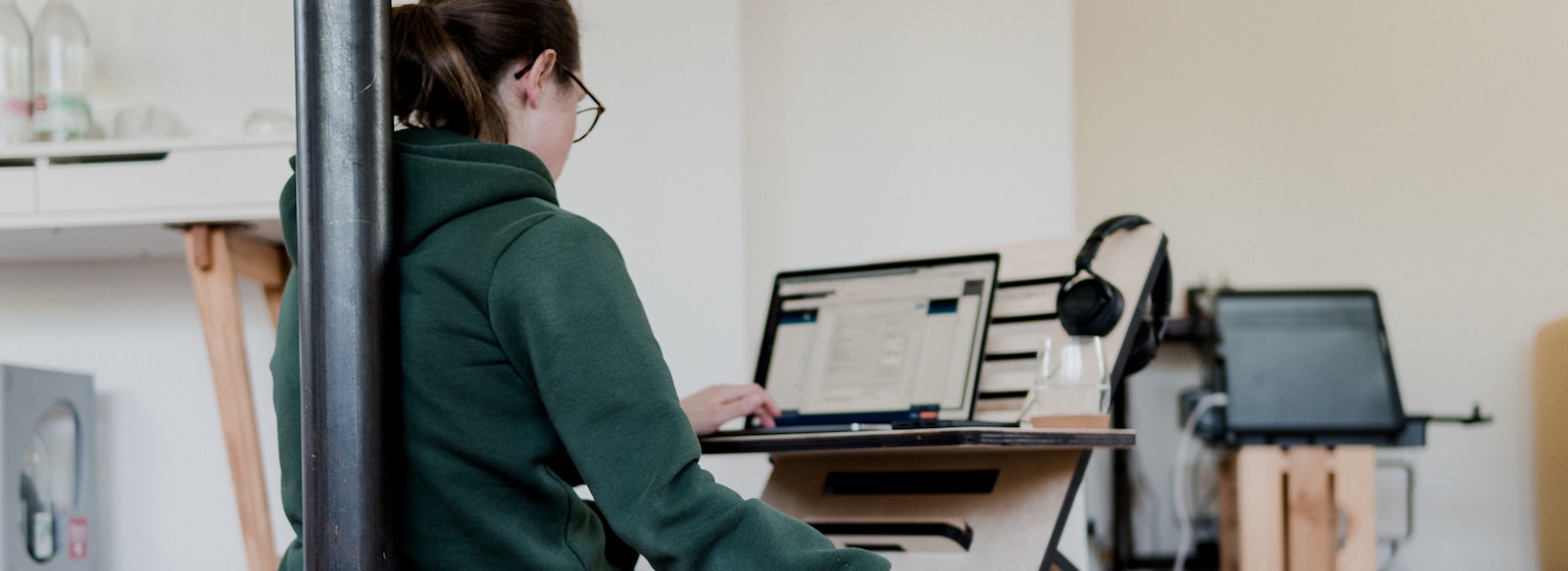
What happens when you sit without support?
When you sit in a position that offers no support for the body, you almost always end up slouching or curving your back and neck. Whether you’ve been sat on a barstool at your kitchen counter, on the sofa, or propped up in bed with your laptop, your back is being compromised – especially your lower back and lumbar.
A chair that is too high will put undue pressure on the thighs, restricting the circulation and increasing the risk of things like swelling, inflammation, and varicose veins, as well as pressing on the sciatic nerve. A chair that is too low, on the other hand, will impact the function of the internal organs and put too much weight and pressure on the glutes and lower back.
You also end up tilting the head forward, which strains the neck, as well as bending the wrists back too far due to unsupported forearms. Not only does all of this create situational pains and niggles, but it can also lead to chronic pains and long-term musculoskeletal issues further down the line.
Not only that, forcing your legs under worktops or tables which are too low, or curling your legs up in bed or on the sofa for long periods of time can reduce circulation and prevent blood from flowing properly. Again, this manifests as minor problems like pins & needles in the short term but can create more serious physical health issues if left unmanaged for prolonged periods of time.
If this is something you are suffering with, check out our gentle office yoga guide with 200hr trained yogi, Erika Khanna!

Finding support in the workplace
Support from an employer shouldn’t just be about professional development and salary reviews; an employer needs to show care and consideration for their staff’s mental and physical wellbeing. So, here, ‘support in the workplace’ takes on more than one meaning whereby employees need to be provided with furniture and a working environment that will make their experience safe, comfortable and also, inclusive.
The many months of remote working in difficult, makeshift surroundings will have taken its toll on so many people’s physical health and posture so now, more than ever, the workspace needs to step up in terms of support. So, as well as considering multi-sensory design elements and aesthetics when selecting office furniture, it’s also vital to consider how they support the natural movement and functions of the body.
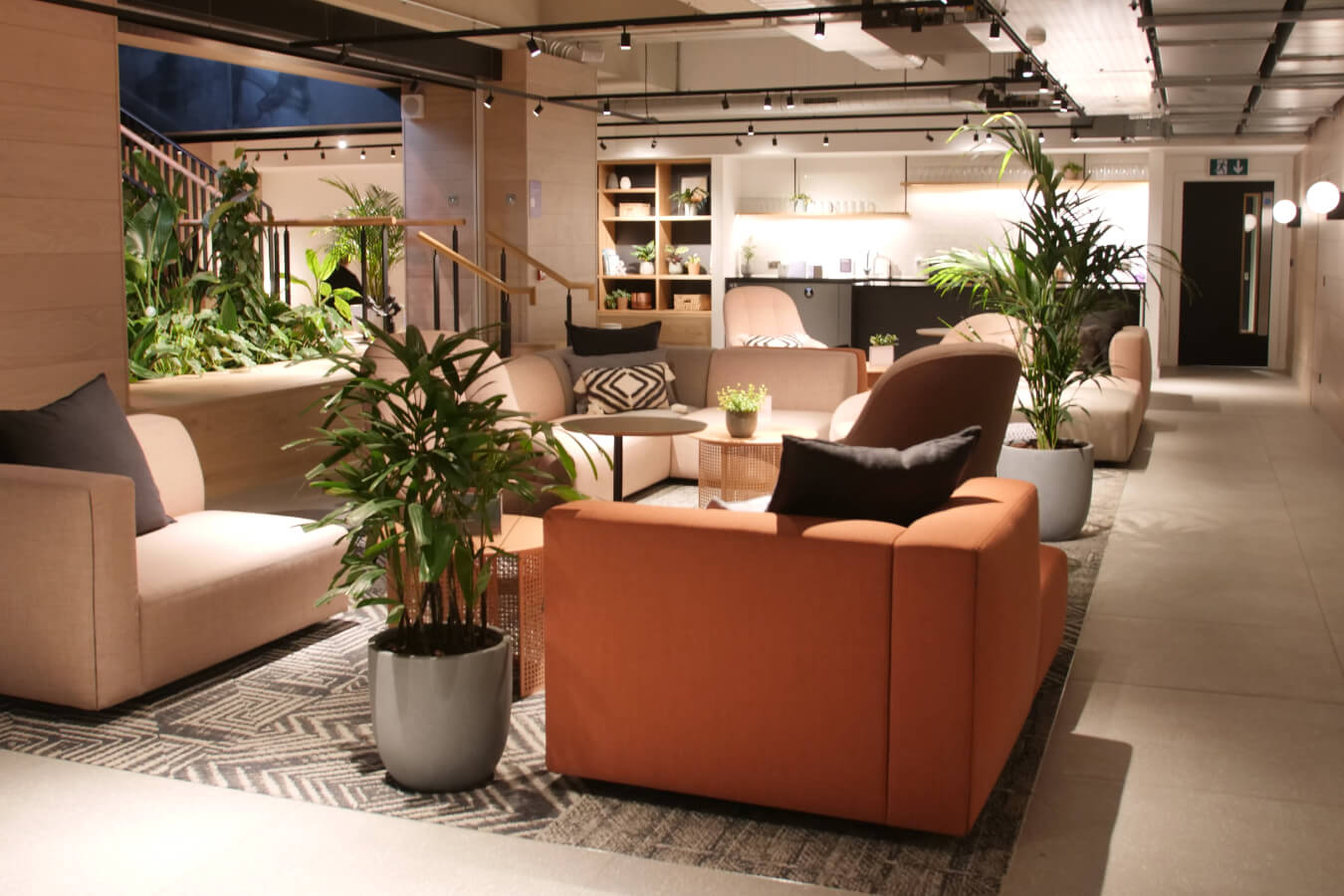
How to make a workplace more ergonomic
As a business owner or employer, making a working environment more ergonomic isn’t just about investing in fancy height-adjustable desks and all-singing, all-dancing task chairs like the Steelcase Gesture chair pictured above. It’s about providing different work settings and diverse spaces so that staff can have more choice and control throughout the day around how and where they work.
For example, somebody might want to spend an hour standing up at a sit-stand desk while they catch up on emails or carry out desktop work. They then might want to move to a breakout area with a big, squashy sofa with a few colleagues to share ideas or have an informal catch-up. They then might want to go and take a seat in an acoustically-enhanced pod or ‘Zoom room‘ to carry out a call or concentrate on individual focus work.
Encouraging more physical movement around the workspace throughout the day will benefit the body and as a result, also help nurture stronger mental wellness. A happy, healthy workforce is a workforce that can remain engaged, motivated, collaborative, and productive. That said, investing in furniture products with ergonomic credentials is a great way to boost this support and ensure staff get their posture and long-term comfort back in good health.
